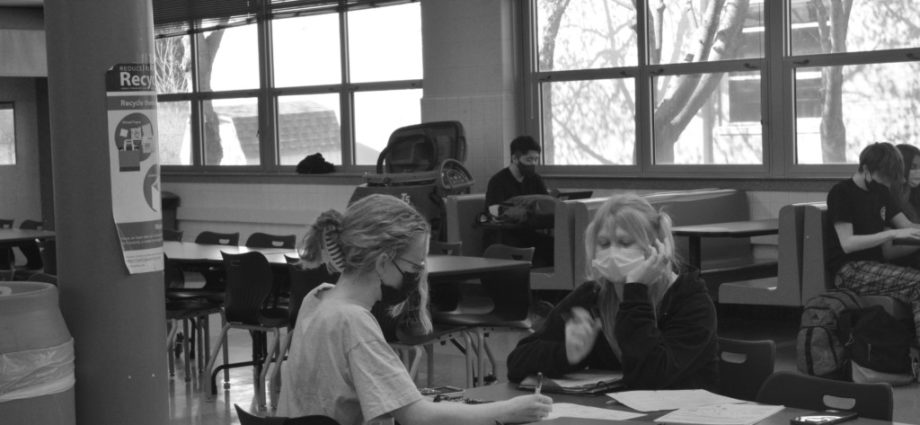Counselor Douglas Sawitsky established the Peer Tutoring Program for students to have a place to receive extra help in their classes. It is held on late bus days, Mondays and Thursdays, from 3:00 to 4:00 p.m. in the cafeteria.
Sawitzky came up with the idea around the semester mark and got it up and running quickly.
“The PTP consists of friendly students equipped to help with most subjects, including math, science, social studies, English and world languages,” counselor Douglas Sawitzky said in an email to all students. “The reason this program got off the ground [was] talking to a lot of students who have lots of D’s and F’s [and] parents reaching out for academic support, and we didn’t always have a great answer where to send them,” Sawitsky said.
The six lead tutors are a combination of sophomores and juniors, although the program also has a further 40 to 50 regular tutors.
“I’m one of the lead tutors, so my role is just sending out emails to other tutors about potential appointments,” lead tutor and sophomore Emma Pollock said.
This volunteer method comes with varying commitment from the student tutors.
“That’s why we have so many tutors, just because some people like to respond more to emails about appointments and come in more,” Pollock said. “So it’s very much based on how much you can tutor.”
Tutor commitment varies as much as tutee commitment.
“We have nine kids showing up for chemistry on [Feb. 10] preparing for a test,” Sawitzsky said. “[It depends on] time of year. I anticipate the next two weeks having bigger demand with the quarter ending. We’ll certainly see.”
At each session there are about 10 to 15 tutors including a constant 10 tutors for walk-in sessions, plus additional tutors for every personal appointment scheduled.
“In the [sign-up] form we asked each tutor what they were comfortable in tutoring,” lead tutor and junior Karen Lin said. “We basically sorted the tutors out by how many subjects they could teach, [which] also helps with appointments when students request for certain subjects.”
The tutors sign up on a first come first serve basis.
“[The availability sheet] opens up like a week beforehand,” Lin said. “Then people just go on to the sheet and take up whatever slots are available at the time.”
The program’s success rate has fluctuated.
“I think it is like with any new program, it takes a while to get off the ground,” Sawitzky said. “So I expected to have low numbers at first, but it’s really been up and down. Like last week, we had 12 or 13 per session, but then Monday was a dud; we only had one kid show up.”
The program was aimed for all students to get help from their peers.
“In theory, I think this was designed for anyone to get tutoring,” Sawitzsky said. “But we were definitely hoping kids in more standard level math classes who were struggling had a place to go.”
Pollock said she has high hopes for the rest of the program.
“We knew there was an interest in having it, but it’s been going really well,” Pollock said. “We’re hoping it goes beyond just this year.”
Sawitzky said he encourages students to give the program a try if they have not already.
“I think it really is a good free resource,” he said. “I think pretty much everyone’s experience has been a positive one. Everyone’s always gotten a tutor when they’re there.”
2022-04-20

